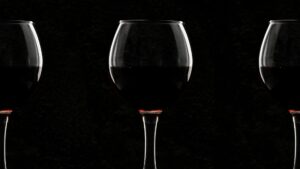Of all the countries in the world that produce wine, France is possibly the most renowned. The home of the famous regions of Bordeaux and Champagne, France rightly garners much attention. Here is a quick look at Bordeaux.
Located in the southwest of France, wine-making has been taking place in Bordeaux for almost 2000 years.
But, it was the classification of 1855 that started to build the reputation of the area. The Bordeaux Wine Official Classification of 1855 resulted from the 1855 Exposition Universelle de Paris, when Emperor Napoleon III requested a classification system for France’s best Bordeaux wines that were to be on display for visitors from around the world. Brokers from the wine industry ranked the wines according to a château’s reputation and trading price, which at that time was directly related to quality.
The list is clearly outdated with many non-classified growth estates producing very high-quality wines. And, in many instances at a fraction of the cost of those that achieved their status so long ago. But this intentional ranking of wine producers put the world on notice that Bordeaux is serious about making fine wine.
The majority of Bordeaux wines (nearly 90 percent of production volume) are the dry, medium- and full-bodied red Bordeaux Blends that established its reputation. These wines are blends made up, predominantly, from just three grapes: Merlot, which accounts for two-thirds of all red grape plantings, Cabernet Sauvignon (22.5 percent) & Cabernet Franc (9.5 percent).
Bordeaux’s white wines are generally blends of Sémillon, Sauvignon Blanc, and, less often, Muscadelle. These can range in style from very dry to dessert level sweet. With the regions of Sauternes and Barsac being most well-known for some of the greatest sweet wines in the world.
Bordeaux’s climate is moderated by its proximity to the Atlantic Ocean and various rivers: the Dordogne, the Garonne and the Gironde Estuary into which they flow. The region’s long, relatively warm summers are ideal for growing late-ripening grape varieties. There can be challenges with cool, wet weather in spring and autumn. But, with relatively recent advances in vineyard management and wine making techniques those challenges can be handled and even in the most difficult of years fine can still be produced.
Below is a list of just a few chateaux, listed in no particular order, that are making great wine in Bordeaux. While some are First Growths (from the 1855 classification) many are not.
Next up is Italy. Italy is home to a large array of wines, regions, grape varieties and wine styles. But it is the sun-drenched region of Tuscany that is the most renowned. Within Tuscany there are several famous regions and sub-regions: Chianti (featuring, among others, the sub-regions of Chianti Classico & Chianti Colli Senesi), Brunello di Montalcino and Vino Nobile di Montepulciano.
Of those regions the most famous is Brunello di Montalcino. The wines from Brunello are one of Italy’s, and the world’s, greatest wines. Nowadays, the wines from Brunello must be made from 100% Sangiovese but, historically, that was not the case.
The first recordings of red wines from Montalcino date back to the early 14th Century. However the all-Sangiovese Brunello di Montalcino style we know today did not emerge until the 1870s, just after the creation of a single Italian state. Prior to that it was common practice to ferment all grapes together, whether different clones, varieties, or even color. Thanks in large part to the work of Ferruccio Biondi-Santi who decided to vinify his Sangiovese grapes separately a new, better, style was born. These Brunello di Montalcinos gained a reputation as one of Italy’s finest wines by the end of World War II. However, they only managed 4 “declared” vintages by 1945: 1888, 1891, 1925 and 1945. But the die was cast: These better wines encouraged other winemakers and farmers in the region to produce similar wines of similar quality. By the 1960s, there were at least 11 Brunello producers in the Montalcino area.
In July 1980 the area achieved formal recognition from the Italian government: gaining DOCG (Denominazione di Origine Controllata e Garantita) status along with Barolo in Piedmont.
There have certainly been other factors that have led to the emergence of Brunello as one of the finest wine regions in the world but here we are.
Below are some of the best producers in the region:
Staying in the “old-world” the next stop is in Spain. Rioja in the north is arguably Spain’s top wine region, and certainly the most famous. The majority of the production is barrel-aged red wines made from Tempranillo and Garnacha.
The region is divided more by geographical features and less by political and governmental boundaries. Chief among these are the Ebro and foothills of the Sierra de la Demanda and Sierra de Cantabria mountain ranges. The Cantabrian Mountains, which border Rioja to the north and west, provide shelter from cold, wet weather brought in by the Atlantic Ocean. This keeps Rioja warmer & dryer, which is a significant factor in the region’s ability to produce great wine.
All higher-end red Rioja is matured in new oak barrels. American oak has been the preference for many years, but some wineries now use a mix of American and French oak. The amount of time that a Rioja wine spends in barrel dictates which of the official Rioja aging categories goes on the label: Joven, Crianza, Reserva or Gran Reserva.
Joven wines are intended for consumption within two years of vintage. They spend little or no time in oak. In Spanish “joven” is the word for young.
Crianza red wines must be aged for at least one year in oak, and up to one year in bottle. They are released in the third year.
Reserva red wines spend a minimum of one year in oak. They cannot be sent to market until a full three years after vintage.
Gran Reserva red wines undergo a total of five years’ aging with at least two years spent in barrel.
All of this focus on aging is due to the lack of vineyard holdings on the part of early Rioja wineries. The winery operations became the focus to promote the quality of their product. So, initially Rioja was more about producer over place. Lately, both factors are considered very important.
Rioja does produce white wine but that production is tiny in comparison to the reds, just 7 to 8 percent. Most recently the focus for white wine in Rioja has been on two grapes: Viura (aka Macabeo), and Chardonnay. Both of these wines are made to give a slightly lighter & fresher style. Also authorized for use in white Rioja are Garnacha Blanca, Tempranillo Blanco, Maturana Blanca, Verdejo and Sauvignon Blanc.
Below are some of the best producers in the region:
Now we will head to the “new-world”. Our first stop is Argentina. Argentina has many wine regions running from north to south with each region, of course, having its own set of unique growing conditions and styles. But, the benchmark region, the “Napa Valley of Argentina”, if you will, is Mendoza.
Located on a high-altitude plateau at the edge of the Andes Mountains near the border with Chile (Mendoza is closer to the Chilean capital Santiago than it is to its own capital Buenos Aires), the Mendoza province is responsible for roughly 70 percent of the country’s annual wine production. The French grape Malbec has its New World home in the vineyards of Mendoza, producing great red wines.
While Malbec is clearly the star of the region, there are also extensive plantings of Cabernet Sauvignon, Chardonnay, Syrah, Torrontes and Sauvignon Blanc. Mendoza is also beginning to show itself as a producer of sparkling wine.
Mendoza’s winemaking history is nearly as old as the colonial history of Argentina itself. The first vines were planted by priests of the Catholic Church’s Jesuit order in the mid-16th Century. But, most of that wine was destined for sacramental use.
It is understood Malbec was brought to Argentina around the mid-19th Century when French, Spanish and Italian immigrants flooded into Mendoza to escape the ravages of the phylloxera louse that was devastating vineyards in Europe at the time. Wine production dramatically increased in 1885, when a railway line was completed between Mendoza and the country’s capital city, Buenos Aires, providing a cheaper, easier way of sending wines out of the region.
Altitude is one of the most important characteristics of the Mendoza terroir. The strip of vineyard land that runs along the base of the Andes lies between 800 and 1200 meters (2600 and 3900ft) above sea level, and it is this altitude that moderates the hot, dry climate of the region.
Warm, sunny days are followed by nights made much colder by westerly winds from the Andes. This cooling-off period slows ripening, extending the growing season and contributing rich, ripe flavors to the grapes that still retain a balancing acidity.
Mendoza has perfect soil for viticulture: it is rocky & sandy with little organic matter and is free-draining, keeping the area dry and low in productivity. Now that is bad for most plants, but is the ideal setting for grapevines: the vines are forced to work hard for hydration and nutrients, and will produce small, concentrated berries instead of large, leafy foliage.
Some of the best:
No list of the Top 5 wine regions in the world would be complete without the Napa Valley in California. The US now has many great regions in many states but that is all thanks to Napa. Without the ground-breaking work of grape growers and vintners in the late 1960’s and the 1970’s who knows where the US wine market would be today.
Napa is an hour’s drive north of San Francisco, California, is the most famous and prestigious wine region of the New World.
The founding pioneers of Napa Valley winemaking were George C. Yount and John Patchett and his winemaker Charles Krug, founder of the namesake winery.
George C. Yount sold 240 acres (97 hectares) of what was still farmland to the pioneering cultivator Hamilton Crabb in 1868. In 1872, Crabb established a vineyard and winery named “To-Kalon” and by 1877 had planted 130 acres and was producing 50,000 US gallons of wine per year. To Kalon to this day is one of the most famous and sought-after vineyards in all of Napa Valley. Other legends abound: the Beringer brothers Jacob and Frederick, whose Beringer Vineyards (est. 1875) is one of California’s oldest continuously operated wineries. Robert Mondavi, who established his winery in 1966, is considered to be one of the pioneers of Napa’s modern wine industry. Robert was also an avid and outspoken promotor and salesman of the region!
Two other gentlemen must also be included on any list of the most important figures of the Napa Valley: Mike Grgich and Warren Winiarski. They are the winemaker’s of the wines that won the Judgement of Paris. This was a blind tasting, in Paris, of the top wines from France against the best wines from Napa Valley. The event was put on by a British wine merchant, Steve Spurrier. Steve Spurrier ran a wine shop in Paris, Les Caves de la Madeleine, starting in 1971 until 1988. To the surprise of the French judges and certainly the Napa Valley producers a wine from California won both best red wine and best Chardonnay. Mike Grgich was the wine-maker of the winning Chardonnay: 1973 Chateau Montelena. Warren Winiarski was the wine-maker of the winning red: 1973 Stag’s Leap Wine Cellars Cabernet Sauvignon. Surely, Napa was destined for greatness and would have, eventually, become world renowned. But, it is clear, this event catapulted the region into the global spotlight almost overnight.
While many grape varietals thrive in the Napa Valley it is Cabernet Sauvignon that has become most well regarded from there. Napa Cabs are produced to high standards and in a popular style. It is the most widely planted grape in almost all of the valley’s sub-regions.
The climate and topography are ideal for fine wine production in Napa. The combined influences of San Pablo Bay and the hills of the North Coast Mountain Ranges make for a first-rate viticultural area. The bay generates morning fog, and the hills channel it inland, up into the valley. Without this fog the valley’s temperatures would be too warm, making it difficult to achieve structure and balance in the wines.
There are so many producers of great Cabernet in the Napa Valley. Here are just a few:
Now go out there and visit some of these places!






